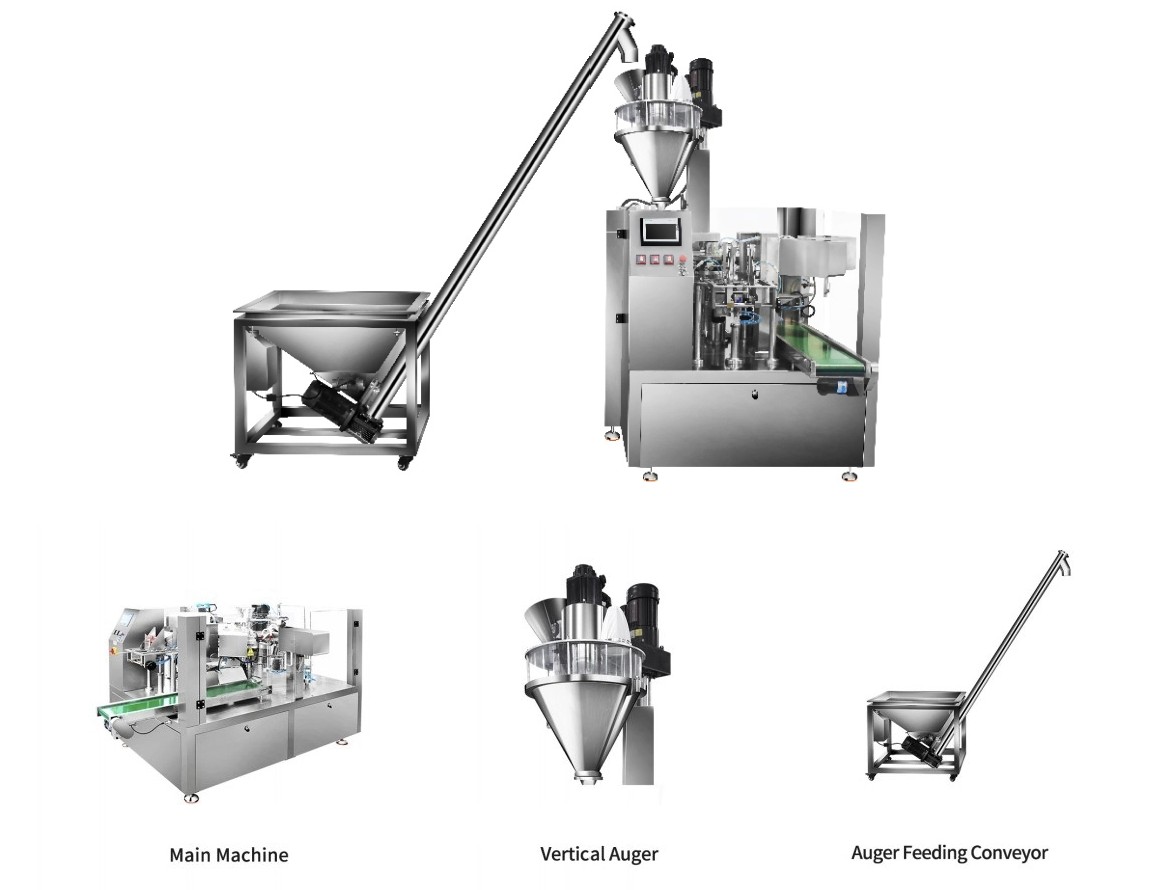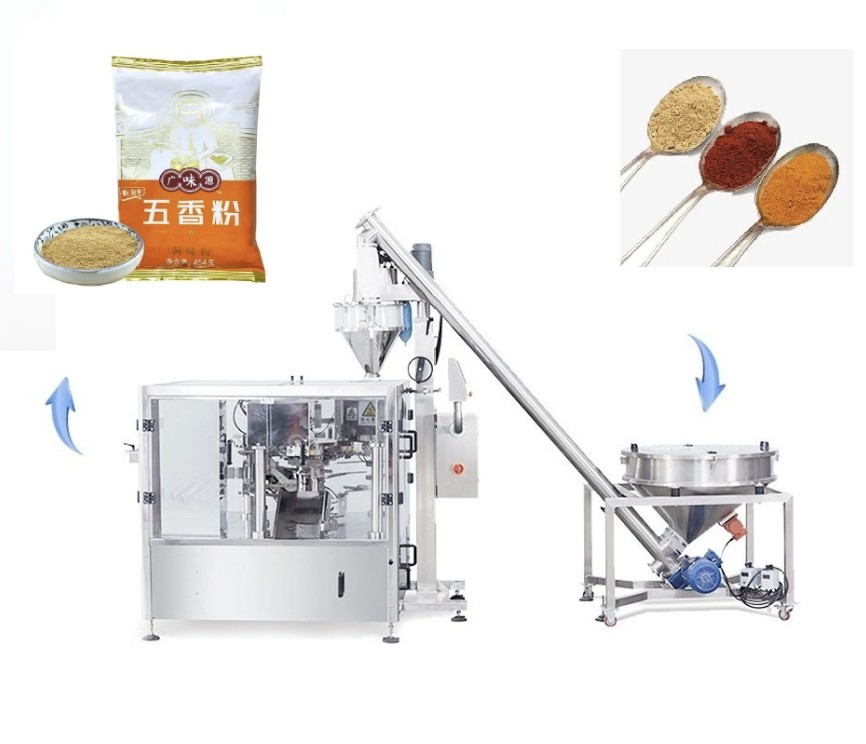Views: 0 Author: Site Editor Publish Time: 2025-09-15 Origin: Site








Ever wonder how your food or cosmetics arrive in perfect pouches? Automatic pouch filling machines are the hidden engine. These systems save labor, boost speed, and protect products. But how do automatic pouch filling machines work in practice? In this post, you’ll learn the full process, key benefits, and why businesses rely on them.
What Is an Automatic Pouch Filling Machine?
Key Components of an Automatic Pouch Filling Machine
How Automatic Pouch Filling Machines Work: Step-by-Step
Common Issues and Troubleshooting
FAQs About Automatic Pouch Filling Machines
An automatic pouch filling machine is a modern packaging system. It takes an empty pouch, fills it, then seals it quickly. These machines save time, cut labor, and reduce waste. They keep products safe and give pouches a professional look.
Manual: Workers load and seal every pouch by hand.
Semi-Automatic: The machine helps, but operators still handle key steps.
Automatic: It does almost everything—load, fill, seal—without constant human input.
| Machine Type | Speed & Labor | Best For Small Runs | Consistency | Cost Level |
|---|---|---|---|---|
| Manual | Very slow | ✅ | Low | \$ |
| Semi-Automatic | Moderate | ✅ | Medium | \$\$ |
| Automatic | High speed | ❌ | High | \$\$\$ |
They are common in many industries. Food brands use them for snacks, sauces, and coffee. Beverage makers fill juices and energy gels. Pharma companies seal powders, tablets, or liquids. Cosmetics firms package creams, gels, and masks. Even hardware suppliers trust them for small parts.

Automatic pouch filling machines may look complex. But when we break them down, they use several core parts.
It’s the starting point of the cycle. The magazine holds pre-formed pouches in place. Adjustable guides let it fit different sizes easily.
Here’s where products enter the pouch. Powders, liquids, or solids get dispensed through tailored fillers. Multi-head weighers, augers, or piston fillers control accuracy.
Heat bars press and seal the pouch. Some models add gas flushing or vacuum sealing for freshness. The goal is always strong, airtight closure.
Sensors check if a pouch is present. “No bag, no fill” avoids wasted product. PLC and HMI screens let operators monitor and adjust settings.
Many pouches have resealable features. Machines use openers and closers for zippers or sliders. It helps customers reseal after opening.
Extra tools boost efficiency. Conveyors move pouches downstream. Pouch shakers settle products evenly before sealing.
| Component | Function | Example Use Case |
|---|---|---|
| Pouch Magazine | Holds pouches at start | Stand-up or gusseted bags |
| Filling Station | Dispenses product accurately | Coffee, sauces, powders |
| Sealing Station | Creates airtight closure | MAP, vacuum sealing options |
| Sensors & Controls | Detects pouch + manages operation | No pouch = no fill |
| Zipper & Closures | Opens/closes resealable parts | Zipper coffee bags |
| Auxiliary Equipment | Supports packaging flow | Conveyors, pouch shakers |

An automatic pouch filling machine turns a flat, empty pouch into a shelf-ready package in seconds. Below is a plain-language tour of each station, with a quick table you can save for later.
| Station | Main Job | Key Point |
|---|---|---|
| 1. Loading | Feed one pouch | Gravity + roller, no fans |
| 2. Gripping | Hold it straight | Vacuum cups + fingers |
| 3. Printing | Add code | Hot ink or emboss |
| 4. Opening | Pop mouth wide | Vacuum + air puff |
| 5. Filling | Drop product | Swap tool per recipe |
| 6. Settling | Level the contents | Gentle taps |
| 7. Sealing | Melt & squeeze | Hot bars + foam pads |
| 8. Cooling | Set the seam | Cold bars press |
| 9. Discharge | Send it out | Belt or slide |
The operator stacks pre-made pouches in a slanted magazine. A soft rubber roller touches only the bottom bag; when the cycle starts the roller turns once and pushes that single pouch forward. Gravity does the heavy lifting, so there are no complicated push plates or air knives.
Two small vacuum cups lift the pouch just enough for mechanical fingers to clamp the side seals. A metal guide brush swipes the bottom corner, straightening the bag before it locks into the moving carriage. From now on the fingers act as the pouch’s personal handle.
A compact thermal printer head drops down, touches the pouch for half a second and prints the date or lot code. Ink dries instantly because the head is hot—no smears, no solvents. If embossing is needed, a tiny ridged wheel presses raised letters into the film instead. Both tools ride on the same slide; the machine simply lowers the one that is chosen.
Two wide vacuum pads pull the front and back panels apart while a narrow air nozzle gives a short “puff,” much like opening a paper lunch bag. A photo-eye looks through the mouth; if it sees light the cycle continues, if not the machine stops and flashes a gentle alarm. Zipper pouches get extra help—small fingers unzip the track first so the seal is never stressed.
The right tool clicks in like a printer cartridge. Powders (coffee, flour) spin through an auger that counts turns; liquids (sauce, oil) slide from a piston cylinder; chunky items (nuts, candy) drop from mini-buckets that dance until the scale is happy. While the nozzle is inside, a quiet nitrogen puff can push oxygen out, keeping crisps fresh longer. A small suction hood above the fill zone pulls away dust or steam so the sealing area stays clean.
The whole pouch is lifted and dropped a few millimetres several times, shaking powder flat or letting pieces slide downward. If the recipe needs two parts—say granola plus a shot of honey—a second mini-filler swings in while the tapping continues. The machine decides how many taps are needed by watching the photo-eye, so there is no guess-work.
Two Teflon-coated bars close on the open mouth. A short burst of heat melts the plastic layers together, and soft foam pads gently squeeze the pouch from bottom to top, pushing excess air out like burping a freezer bag. The result is a thin, flat, wrinkle-free seam that will not peel open even if the pouch is dropped.
Cool bars (room temperature) press the seal for one extra second to set the melt and prevent shrink wrinkles. This small pause also gives the photo-eye time to double-check the seam width; if it is too narrow the pouch is rejected later.
Grippers open, and a short conveyor belt carries the finished pouch out. A side puffer can push faulty bags into a reject bin while good ones slide into a box, a rotary table or the next packaging step. The whole dance takes 4–8 seconds per pouch, and the next bag is already on its way.
That’s the entire journey: open, fill, close, send—repeat a few thousand times an hour, all day long.
Even reliable machines face problems at times. Here’s what often goes wrong and how we can fix it.
Sometimes seals look weak or uneven. It may be low heat or poor pressure. Check the sealing bar temperature and pressure settings. Replace worn sealing parts if they no longer perform well.
Products can jam inside feeders or sit off-center. It happens when rollers or belts wear out. Recalibrate feeders for smoother flow. Swap damaged parts before they stop production.
A sudden stop frustrates operators. Often it comes from power failure, overheating, or bad sensors. Confirm stable power and proper cooling. Inspect sensors to make sure they respond correctly.
Strange sounds mean trouble inside the system. Loose bolts, bad bearings, or poor lubrication cause it. Tighten all connections firmly. Lubricate moving parts and replace worn bearings.
| Issue | Likely Cause | Fix Action |
|---|---|---|
| Poor seal quality | Low heat / weak pressure | Adjust settings, replace sealing parts |
| Jammed products | Worn belts / misaligned | Recalibrate feeders, change parts |
| Sudden shutdowns | Power / cooling / sensor | Check power, cooling, replace sensors |
| Noise or vibration | Loose parts / bearings | Tighten, lubricate, replace bearings |
Entry-level models may fill around 50 pouches per minute. High-speed machines handle over 2,000 pouches in the same time. Speed depends on product type, pouch size, and filler setup.
They manage powders, liquids, granules, and pastes. Food, beverages, cosmetics, pharma goods, and chemicals all fit well.
Not really. Most modern units use touchscreens and simple controls. Operators need some training but not advanced technical skills.
Stand-up, gusseted, pillow, and zipper pouches are supported. Adjustable guides and quick-change systems fit different formats.
Basic machines may cost in the mid five-figure range. Fully automated, high-speed systems reach millions. Price reflects speed, customization, and overall complexity.
For teams evaluating an Automatic Pouch Filling Machine, the goal is simple: repeatable quality, lower unit costs, and faster changeovers. The models in Eastbest’s portfolio align tightly to the step-by-step workflow you’ve just read—load → grip/orient → code → open/detect → fill → settle → seal/deflate → cool → discharge—and they cover both powder and liquid applications common in food, nutraceuticals, and personal care.
If your requirements center on uptime, seal integrity, and SKU agility, these Pouch Filling Machines provide a practical, immediately deployable path to higher OEE—without reinventing your downstream case packing or QA. For a technical fit check, start by mapping your product set (powder/liquid/granule), target pouch styles (stand-up, zipper, shaped), and desired line speed to the two machines above; they cover the most common B2B powder use cases while preserving room to scale.